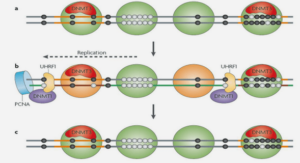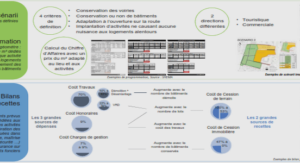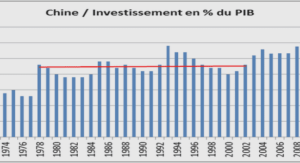Effet de la dissolution sur le B sur Ca des foraminifères planctoniques
Introduction
Le rapport B/Ca des foraminifères planctoniques est étroitement lié au pH des eaux de surface, et représente donc un proxy prometteur pour la reconstruction des variations du cycle du carbone. Néanmoins, la qualité de ce proxy ne dépend pas que des conditions initiales, c’est à dire l’incorporation du bore dans les foraminifères vivants, mais dépend également du processus de sédimentation des tests de foraminifère et de leur préservation dans le sédiment. En effet, de nombreuses études ont montré l’influence de la dissolution des carbonates sur les proxies géochimiques, tant en matière d’isotopie que d ‘analyse élémentaire. Ainsi, l’effet de la dissolution tend à diminuer la composition isotopique du bore dans les carbonates (e.g. Spivack and You, 1997 ; Wara et al., 2003 ; Hönisch et al., 2004), mais diminue également les valeurs d’autres traceurs comme le rapport Sr/Ca (E.G. Lohmann 1995 ; Brown and Elderfield, 1996 ; Rosenthal et al., 2000), le rapport U/Ca (Russell et al., 1994) ou encore le proxy de température Mg/Ca (Brown and Elderfield, 1996 ; Dekens et al., 2002 ; Gehlen et al., 2005a ; Regenberg et al., 2006 ; Nouet and Bassinot, 2007). Nous avons souhaité savoir si ce biais potentiel possédait ou non une influence sur le rapport B/Ca des foraminifères planctoniques. Nous avons utilisé des sommets de carottes issues d’un transect de profondeur sur la Sierra Leone Rise (SLR), dans l’Atlantique Est équatorial. Ces carottes ont été prélevées par le R/V Knorr à l’aide d’un préleveur à multitubes (Figure 30), qui présente l’avantage de pénétrer le sédiment sur quelques centimètres sans en perturber la surface. Une fois que l’on a vérifié que ce sédiment est en place (pas de turbidites, nodules sédimentaires ou autres) on a donc l’assurance que ce sédiment est récent. Des études antérieures basées sur des carottes sédimentaires datées au 14C ou calées stratigraphiquement grâce au δ¹⁸O montrent que les taux de sédimentation oscillent entre 2 et 5 cm par mille ans sur SLR, le premier ½ cm peut donc contenir des foraminifères ayant vécu au cours des deux cents dernières années
Age control and foraminifer selection
Taking advantage of the depth transect, a number of studies have used gravity cores retrieved along the Sierra Leone Rise, either for paleoceanographic reconstructions (Curry and Lohmann 1986; 1990), or to analyze the dissolution effects on geochemical proxies such as Mg/Ca (Rosenthal et al., 2000, Dekens et al, 2002). Oxygen isotope stratigraphy of these gravity cores indicated that Holocene values of benthic foraminifers Cibicidoides wuellerstörfi or Cibicidoides spp are in the range 2.5-2.8‰ (Curry and Lohmann 1986; 1990). The small variability of benthic δ¹⁸O along the transect is explained by the fact that sediments are bathed by North Atlantic Deep Water. Temperature along the depth transect decreases by no more than 0.5°C (World Ocean Atlas; Boyer et al., 2009) corresponding to a 0.12‰ increase in calcite isotopic composition (Shackleton et al., 1974). Deep-water oxygen isotopic composition along the transect is also stable with 0.1‰ variation (GEOSECS; Östlund et al., 1987). The sedimentation rates over the Sierra Leone Rise are rather low, with thickness of the Holocene section in the order of ~ 20 cm. To sample recent sedimentary material, we retrieved cores with a multi-corer and worked on the first centimeter of sediments, which is usually not well preserved through conventional coring. The upper first centimeter of each core was sampled and wet-sieved on a 150 µm mesh-sieve. The coarse fraction was dried 12 hours at 50°C and stored for analysis. C. wuellerstorfi and C. kullenbergi isotopic compositions were obtained at LSCE on an ISOPRIME mass-spectrometer. Four to five replicate analyses were performed at sites A, B, C, D, G and two at sites E and F. VPDB is defined with respect to the NBS19 calcite standard. The mean external reproducibility (1σ) of our carbonate standards is ± 0.06‰ for δ¹⁸O (measured NBS18 δ¹⁸O value is –23.2±0.2‰ VPDB). The Cibicidoides δ¹⁸O values we obtained at stations A to G are remarkably homogeneous, falling all within the narrow range 2.5 to 2.75 ‰ (Table 7) and are similar to the Holocene values previously found in this area (Curry and Lohmann 1986; 1990). The homogeneity of our δ¹⁸O data clearly indicates that bioturbation does not result in a noticeable upward mixing of glacial shells at any of our Sierra Leone Rise sites. The planktonic species G. ruber (sensu stricto) is frequently used in paleoeanographic studies because it is a shallow dwelling species, limited to the first 30 m of the water column. However, because G. ruber is very sensitive to dissolution, the deep sites of the Serra Leone Rise transect contain almost no intact shells of this species. In order to cover the full range of water depths and ∆CO32- along the Sierra Leone Rise transect, we focused our study on G. sacculifer, a surface dwelling planktonic species, whose shells could still be found easily at the two deepest sites (F and G). We selected G. sacculifer specimens without the final sac-like chamber in order to avoid any potential bias linked to changing depth habitat during reproduction, and/or to the development of gametogenic calcite. The post mortem precipitation of diagenetic calcite on foraminifer shells may potentially affect their trace element composition (e.g. Boyle, 1983). Because dissolved Mg is eight times more abundant than Ca in seawater, this diagenetic calcite is characterized by high Mg/Ca, as was clearly evidenced from recent studies conducted on foraminifer shells from the eastern Mediterranean Sea (Boussetta et al., 2011; Sabbatini et al., 2011). In foraminifer shells from the Sierra Leone Rise we could not detect diagenetic calcite overgrowth, neither through direct SEM observations (Ghelen et al., 2004), nor through X-Ray 90 Diffractometry analyses (Nouet and Bassinot, 2007). Anomalously high Mg/Ca values were never detected during ICP-AES analyses performed on shells of different planktonic foraminifer species (e.g. Gehlen et al., 2005; Nouet and Bassinot, 2007; Mathien-Blard and Bassinot, 2009) or through trace element cartography of foraminifer shells using particle-induced X-ray emission (PIXE; Gehlen et al., 2004). We are confident, therefore, that there is no early diagenetic calcification of foraminifer shells in surface sediments from the Sierra Leone Rise.
Cleaning method
Two sets of samples were prepared for B/Ca and Mg/Ca measurements. The first was cleaned and analyzed at the Laboratoire des Sciences du Climat et de l’Environnement (LSCE, Domaine du CNRS, Gifsur-Yvette, France), and the second at the Godwin Laboratory for Palaeoclimate Research (University of Cambridge, United Kingdom). This comparative study was not performed as part of an inter-laboratory calibration exercise (which would have required more replicate analyses of carefully selected carbonate standards), but to make it possible to double check any potential change of B/Ca and Mg/Ca with increasing water depth of deposition along the Sierra Leone Rise. We used the same cleaning protocol for analyses conducted in the two laboratories (Barker et al. 2003) developed for Mg/Ca analyses. Approximately 25 to 35 individuals (typically ∼500 µg of calcium carbonate) of G. sacculifer (without final sac-like chamber) were handpicked from the 300-355 µm size-fraction, and weighed using a precision microbalance. Samples were gently crushed in order to open the chambers and allow any chamber fill to be removed during the following cleaning steps. After crushing, clays were removed by successive Milli-Q water and ethanol or methanol ultrasonic washes, and an oxidative step (H2O2, 100°C) was applied in order to remove organic matter. Subsequently, a dilute acid leach (0.001 M HNO3), was performed in order to remove any contaminants that may have been adsorbed onto the shells. Finally, samples were dissolved in 300 µL (Godwin Laboratory) or 350 µL (LSCE) of 0.1 M HNO3.
B/Ca and Mg/Ca analyses
In the following paragraphs, we provide key aspects of the protocol used both at the Godwin Laboratory and at LSCE for the determination of B/Ca and Mg/Ca in foraminiferal calcite by ICP-QMS. For further information, the reader is referred to the paper of Yu et al. (2005) in which the analytical protocol is described thoroughly. It is well known that a calcium matrix effect complicates achieving high levels of accuracy in the analysis of trace elements in foraminiferal calcite, either through Inductively Coupled Plasma – Atomic Emission Spectrometry (ICP-AES; de Villiers et al., 2002) or Inductively Coupled Plasma – Mass Spectrometry (ICPMS; Rosenthal et al., 1999; Yu et al., 2005; Harding et al., 2006; Bourdin et al., 2011). In order to overcome this Ca matrix effect, B/Ca and Mg/Ca ratios were determined directly from drift-corrected intensity ratios 91 using external, matrix-matched, standards with a constant calcium concentration (100 ppm [Ca]), and known, variable B/Ca and Mg/Ca values. In this procedure, instead of regressing element intensity counts against elemental concentrations in calibration solutions, then obtaining elemental ratios from the calculated concentrations, the raw intensity ratios for B/Ca and Mg/Ca (corrected for blank intensity) are regressed directly against the B/Ca (µmol/mol) and Mg/Ca (mmol/mol) of the standard solutions. This “intensity ratio calibration” procedure is similar to that described by Rosenthal et al. (1999) and de Villiers et al. (2002). For such a calibration method, multi-element stock standard solutions (with B and Mg, but including also Li, Al, Mn, Z, Sr, Cd and U) were prepared gravimetrically by spiking a 10000 µg/ml Ca standard with appropriate amounts of mono-elemental 1000 µg/ml certified ICP-MS grade stock solutions. The stock standards, prepared in large quantities, are stored carefully. Calibration solutions needed for analytical sessions are diluted to Ca 100 ppm on demand. In order to achieve this matrix-matched, intensity ratio calibration procedure, an aliquot (~50 µl) of each sample solution was diluted and its calcium concentration determined using an Inductively Coupled Plasma – Atomic Emission Spectrometer (ICP-AES). Based on these measurements, the calcium concentration of the remainder of each sample was adjusted to 100 ppm . These samples, adjusted to 100 ppm [Ca], were then run on an Inductively Coupled Plasma – Quadrupole Mass Spectrometer (ICP-QMS) for the determination of B/Ca and Mg/Ca. At LSCE, the ICP-QMS in use is a Xseries II from ThermoScientific, and at the Godwin Laboratory it is an Elan DRC II from Perkin Elmer. Because boron is leached from glassware under acidic conditions, a mini cyclonic quartz spraychamber was used both at the LSCE and the Godwin Laboratory in order to reduce the boron background level. The tests performed by Yu et al. (2005) showed that the boron blank is substantially decreased, to ~ 5%, compared with ~ 30% when using a glass spray chamber. In order to minimize the memory effect, acid (0.1M HNO3) washout time between samples was set to at least 60 seconds. Given the limited foraminiferal sample size, small diameter tubing was used in conjunction with micro-concentric nebulizers. The nebulizer used at the Godwin Laboratory is an ESI MicroFlow PFA-50 and that used at LSCE is an EPOND, PFA No-Break nebulizer (EP 2050-4250), both systems having an uptake rate of ~50µl/min. Prior to each daily session of analyses, in order to avoid decreasing sensitivity along the session caused by Ca deposition on sampling cones, we performed a cone pre-conditioning procedure by injecting pure Ca solution (100 ppm) for 1-2 hours (Yu et al., 2005). Blank correction was ensured by measuring in each run aliquots of the same acid as used for sample dissolution and dilution. In both laboratories, one of the standard solutions (with B/Ca and Mg/Ca close to values found in foraminifers) is used as a drift-correction standard and analyzed every 5 samples. Drift along a typical analytical session (∼6 hours) is less than 5% for boron and 1% for magnesium. In the LSCE analytical protocol we also measured, every ten samples, the B/Ca ratio of a giant clam powder reference material (JCt-1), whose published B/Ca ratio of 184 µmol/mol (Okai et al., 2004) is close to B/Ca values measured in foraminifers. A recent inter-calibration exercise was performed for minor and trace elements including the B/Ca ratio (Hathorne et al., in prep.) and LSCE mean value for standard JCt-1 was 189 µmol/mol, close to the resulting average value of 191 µmol/mol (from only 3 replying laboratories). After 92 correction for any potential drift during the run, a final correction was applied to all the samples in order to match the average B/Ca of JCt-1 to the value of 189 µmol/mol. At LSCE, based on ~100 replicate measurements of the giant clam powder reference material JCt-1, the reproducibility is 3.5% for B/Ca measurements, and is 1.5% for replicate Mg/Ca measurements of a reference standard solution. The longterm standard reproducibility at the Godwin Laboratory, monitored over five years, is 2.1 % (r.s.d) for B/Ca and 0.9 % for Mg/Ca, consistent with precisions of 4.2% and 1.4% measured over a 3 month period by Yu et al. (2005).






